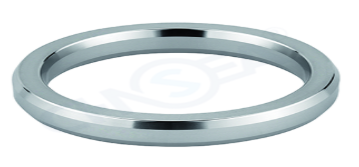In industrial fields, sealing performance directly determines equipment safety and efficiency. This spans deep-sea oil pipelines, aerospace engine compartments, nuclear cooling systems, and chemical reactors.
The ordinary-looking R gasket, with 7 precise protective barriers, becomes the “ultimate guardian” in extreme conditions. How does its micro-structure tackle macro challenges? Why does it rewrite traditional sealing ideas?

1. Composite Materials: Two Basic Lines of Defense
The R gasket’s material system blends rigidity and flexibility perfectly.
- Metal frame layer: Laser-cut into a honeycomb structure, it withstands extreme pressure and stops warping.
- Flexible filling layer: Made of expanded graphite and PTFE. Its tiny micro-pores fill flange gaps, narrowing leak paths to “capillaries.”
Together, it handles extreme cold (liquid helium) to high heat (furnaces) — beyond ordinary gaskets.
2. Three-Layer Structure: From Flat to 3D Protection
The R gasket’s surface isn’t flat; it’s a precision-machined 3D structure.
- Micro-corrugated layer: CNC-carved ringed waves. They bite flanges like “mini locks,” boosting contact area.
- Elastic buffer layer: Unique “dovetail groove” design. It locks into flange edges. Tests show less shifting during pressure swings in oil pipelines.
3. Four Functional Barriers: “Black Tech” for Extremes
- Chemical shield: Zero-leakage anti-corrosion.
In chemicals, its PTFE coating resists strong acids/alkalis (like sulfuric acid, hydrofluoric acid). A pharmacy saw fewer corrosion leaks after use. Some models add graphene, cutting penetration far below traditional gaskets. - Radiation armor: Nuclear-grade safety.
Nuclear R gaskets resist high radiation. With boron-10 and special ceramics, IAEA certifies minimal performance loss over time. - Thermal management: Balancing extreme cold and heat.
In LNG pipes (extreme cold), its low-temperature rubber stays elastic to avoid cracking. In industrial furnaces (high heat), silicon carbide strips spread heat, preventing overheating. Tests confirm stability after repeated temperature cycles. - Longevity layer: Fighting time and environment.
Outdoor pipes face UV, sand, and salt spray. Its nano-titanium dioxide coating absorbs most UV. With antioxidants, it lasts longer in coastal areas.
From materials to structure, function to scenario adaptation, the 7 barriers aren’t just stacked. They merge material science and engineering design. This lets the thin gasket excel in pressure, temperature, corrosion, and vibration resistance.
No wonder it’s core in nuclear, aerospace, and deep-sea exploration — its multi-layer tech lifts industrial safety limits.
The above content and data are for industry popularization.
About Us
Wenzhou Huahai Sealing Co., Ltd., a veteran firm, focuses on R-type metal ring gaskets. It holds ISO9001, API-6A, API17D certifications, and special equipment licenses — proof of quality and standards.
Whether facing high temperature, pressure, or corrosion, we’ll match you with the right material.
The above content and data come from public online sources. Contact us if there are errors.
